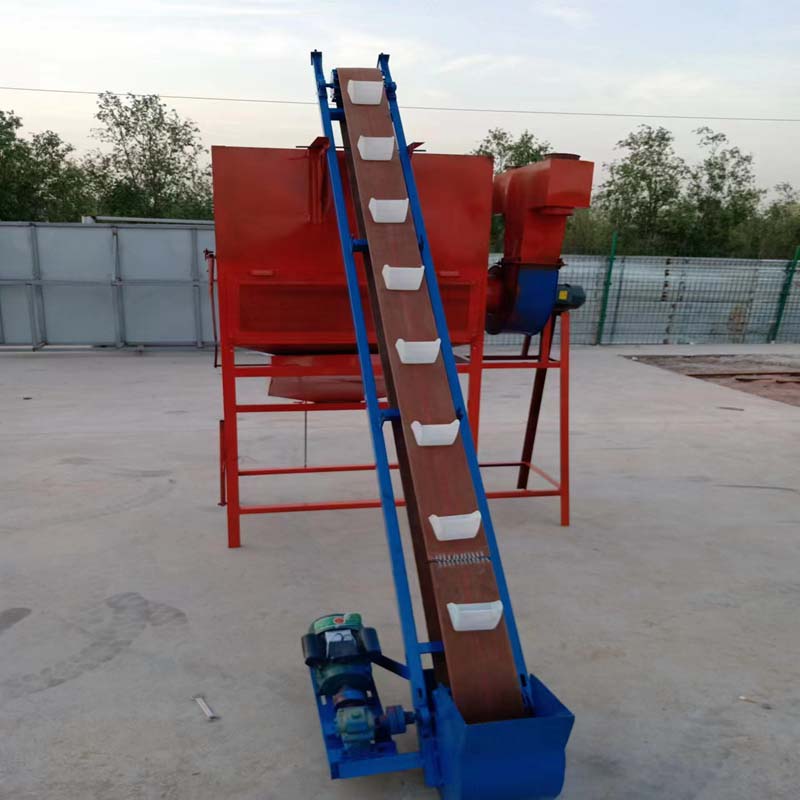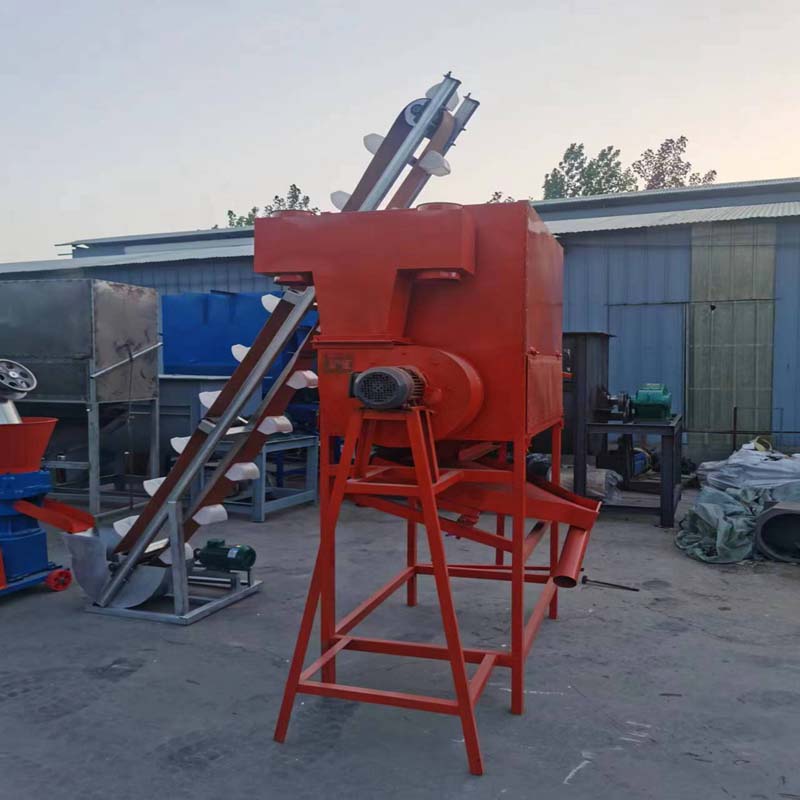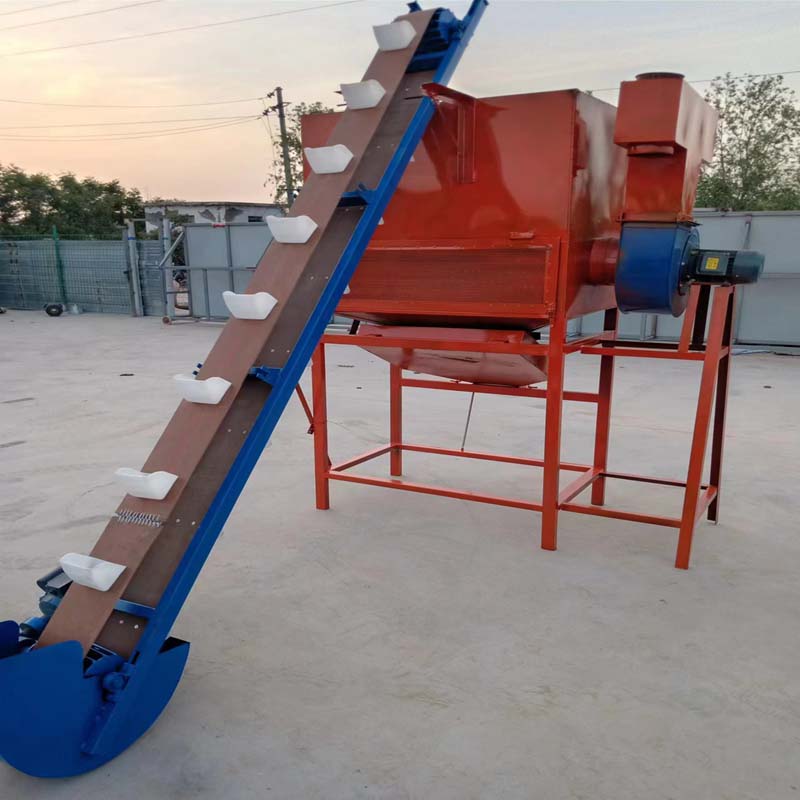Feeds Pellet Maker Machine | Efficient Livestock & Poultry Feed
Sep . 09, 2025 20:20 Back to list
Feeds Pellet Maker Machine | Efficient Livestock & Poultry Feed
Driving Efficiency and Quality in Animal Nutrition: The Modern feeds pellet maker machine
The global demand for high-quality, cost-effective animal feed continues its upward trajectory, fueled by a growing population and increasing meat and dairy consumption. In this dynamic landscape, the efficiency and reliability of feed processing equipment are paramount. Modern pelletization technology, particularly advanced feeds pellet maker machine systems, stands as a cornerstone of sustainable animal agriculture, transforming raw materials into nutrient-dense, easily digestible feed pellets. This comprehensive overview delves into the intricacies of these crucial machines, their technological advancements, application versatility, and the strategic considerations for their acquisition and implementation.
Industry trends indicate a strong move towards automation, energy efficiency, and enhanced feed safety. Manufacturers are increasingly integrating IoT capabilities for predictive maintenance and real-time process monitoring, coupled with innovations in die and roller materials to extend service life and improve pellet quality. The focus remains on optimizing feed conversion ratios (FCRs) for livestock, which directly impacts profitability for farmers and contributes to environmental sustainability by reducing waste and resource consumption.
The Manufacturing Process of a High-Performance Feed Pellet Maker Machine
The production of a robust feeds pellet maker machine involves a sophisticated sequence of engineering and manufacturing steps, ensuring durability, precision, and operational longevity. Each component is meticulously crafted to withstand the demanding conditions of feed production.
Key Manufacturing Phases:
- Material Selection: High-grade alloy steels (e.g., 20CrMnTi, 40Cr) are selected for critical wear parts like ring dies, rollers, and main shafts, providing superior hardness, toughness, and wear resistance. Machine frames are typically constructed from robust carbon steel, often with powder coating for corrosion protection.
- Casting & Forging: Larger structural components, such as the main gear box housing and certain roller assemblies, may undergo precision casting. Forging is employed for high-stress components like shafts and connecting rods, enhancing grain structure and mechanical properties.
- CNC Machining: Advanced CNC (Computer Numerical Control) machining centers are critical for achieving the tight tolerances required for components like ring dies, roller shells, and gear sets. This ensures precise fit, optimal pellet compression, and quiet operation. Heat treatment processes, including carburizing and quenching, are applied post-machining to achieve the desired surface hardness and core strength for critical wear parts.
- Assembly: Skilled technicians meticulously assemble the machine, integrating electrical systems, hydraulic components (if applicable), and pneumatic controls. Precision alignment of gears, bearings, and shafts is crucial for minimizing vibration and maximizing efficiency.
- Testing & Quality Assurance: Every feeds pellet maker machine undergoes rigorous testing. This includes load testing, vibration analysis, temperature monitoring, and noise level assessments. Adherence to international standards such as ISO 9001 for quality management and CE marking for European safety compliance is strictly enforced. Critical components like dies and rollers are tested for material composition, hardness, and dimensional accuracy to ensure a projected service life of 2,000-5,000 hours, depending on feed type and maintenance.
Target Industries and Advantages:
These machines are indispensable across the animal feed sector, including poultry, swine, cattle, aquaculture, and pet food production. Key advantages in typical application scenarios include:
- Energy Saving: High-efficiency gear drive systems, opposed to belt drives, minimize power loss. Optimized die compression ratios reduce energy consumption per ton of feed produced.
- Corrosion Resistance: Stainless steel components in the conditioner and pelletizing chamber prevent contamination and resist corrosion from feed additives and steam.
- Extended Service Life: Advanced wear-resistant alloys for dies and rollers, combined with robust bearing systems and automated lubrication, ensure long operational periods with minimal downtime.
Detailed Process Flow of Feed Pellet Production
The transformation of raw ingredients into high-quality feed pellets is a multi-stage process, each step optimized for efficiency and product integrity. Below is a simplified schematic of a typical pellet mill line.
Pellet Production Process Flow:
1. Raw Material Receiving & Cleaning
Grains, meals, supplements. Removal of impurities.
2. Grinding/Milling
Hammer mill reduces particle size (e.g., to 600-800 microns).
3. Batching & Mixing
Precise weighing and thorough blending of ingredients.
4. Conditioning
Steam treatment to increase moisture and gelatinization.
5. Pelletizing (Feeds Pellet Maker Machine)
Mixed, conditioned mash forced through a die by rollers.
6. Cooling
Counter-flow cooler reduces pellet temperature and moisture.
7. Crumbling (Optional)
Larger pellets broken down for smaller animals (e.g., chicks).
8. Screening
Removes fines and oversized particles for consistent size.
9. Bagging & Storage
Finished pellets are packaged for distribution or stored in bulk.
Each stage is critical. The conditioning process, for instance, gelatinizes starches, which improves pellet durability and nutrient digestibility. The pelletizing chamber, the core of the feeds pellet maker machine, applies immense pressure to form dense, uniform pellets. Optimal die compression ratio, roller gap, and steam addition are precisely controlled to achieve the desired pellet quality, including hardness, durability index (PDI), and moisture content.

Technical Specifications of Advanced Feed Pellet Makers
Modern feeds pellet maker machine units are engineered for high performance, reliability, and precision. Key technical parameters vary based on capacity and target application, but core specifications ensure consistent output and operational efficiency.
Typical Feed Pellet Machine Specifications (Ring Die Type):
| Parameter | Description | Range / Value |
|---|---|---|
| Capacity Range | Output for various feed types (poultry, livestock, aquaculture) | 1 - 40 TPH (Tons Per Hour) |
| Main Motor Power | Power required for pelletization process | 37 kW - 315 kW |
| Die Diameter | Inner diameter of the ring die | 300 mm - 800 mm |
| Pellet Diameter | Adjustable pellet size via die selection | 1.5 mm - 12 mm |
| Conditioner Type | Single-shaft, Double-shaft, Differential Diameter | Customizable |
| Drive System | Transmission method from motor to die | High-precision Gear Drive (standard) |
| Die Material | Material for ring die, affecting wear life | X46Cr13 (Stainless Steel), 20MnCr5 (Alloy Steel) |
| Roller Material | Material for press rollers | High Chromium Alloy Steel |
| Control System | Automation and monitoring features | PLC with HMI, VFD for feeder and conditioner |
| Dimensions (L x W x H) | Overall machine footprint | Approx. 2.5m x 1.5m x 2.8m (for 10 TPH model) |
| Weight | Approximate machine weight | 3 - 15 Tons |

Diverse Application Scenarios
The versatility of a feeds pellet maker machine allows it to cater to a broad spectrum of animal nutrition needs, from large-scale commercial operations to specialized feed formulations.
1. Livestock Feed Pellet Production:
For cattle, swine, and sheep, the `livestock feed pellet machine` produces dense, uniform pellets that prevent selective feeding, reduce dust, and improve feed hygiene. Pellets enhance digestibility and nutrient absorption, leading to better growth rates and milk production. Common pellet sizes range from 6mm to 10mm, designed for optimal intake by ruminants and monogastrics.
2. Poultry Feed Pellet Production:
A `pellet making machine for poultry feed` is essential for broiler, layer, and duck operations. Pellets for poultry are typically smaller, ranging from 2.5mm to 4mm, ensuring ease of consumption and minimizing feed wastage. The pelletization process helps to eliminate pathogens through steam conditioning and creates a palatable feed that promotes rapid growth and efficient egg production, crucial for a high feed conversion ratio (FCR) in commercial poultry farming.
3. Aquaculture Feed Production:
For fish and shrimp farms, specialized `poultry feed pellet making machine` models can be adapted (often via extrusion, though pellet mills can produce sinking pellets with specific formulations) to produce stable, water-resistant pellets. These pellets are formulated to float or sink slowly, allowing aquatic animals sufficient time for consumption, reducing feed loss and water pollution. Pellet sizes can be as small as 1.5mm for young fry.
4. Pet Food and Specialty Feeds:
Beyond traditional livestock, these machines are also employed in producing pet food for dogs and cats, as well as feed for laboratory animals and exotic species. The ability to precisely control ingredient ratios and achieve specific pellet sizes and densities is critical for meeting the unique nutritional requirements of these diverse animals.
Technical Advantages and Performance Excellence
The competitive edge of a superior feeds pellet maker machine lies in its advanced technical features and the tangible benefits these provide to feed manufacturers.
- High Efficiency & Output: Precision-engineered ring dies and rollers, often made from high-chrome alloy steel, optimize compression and reduce friction. This translates to higher throughput (TPH) and lower energy consumption per ton of pellets, yielding significant operational cost savings. Modern designs may feature multi-roller systems for enhanced pelletizing efficiency.
- Durability & Reliability: Robust construction with heavy-duty gearboxes (often supplied by reputable brands), high-quality bearings (e.g., SKF, FAG), and automated lubrication systems drastically extend the machine's lifespan and reduce maintenance frequency. This minimizes costly downtime and ensures consistent production.
- Superior Pellet Quality: Advanced conditioning systems, incorporating steam and sometimes liquid additives, prepare the mash optimally for pelletization, resulting in pellets with excellent durability (PDI > 90%), minimal fines, and uniform density. This directly benefits animal health and feed conversion.
- Automation & Smart Control: Integrated PLC-based control systems with Human-Machine Interfaces (HMIs) allow for precise control over feed rate, steam addition, and temperature. Variable Frequency Drives (VFDs) for the feeder and conditioner motors provide dynamic adjustment, optimizing performance for different feed formulations and raw material characteristics. This reduces reliance on manual adjustments and improves product consistency.
- Safety Features: Comprehensive safety interlocks, emergency stops, overload protection, and high-temperature alarms protect both operators and the equipment, meeting international safety standards like EN ISO 12100.

Vendor Comparison: Selecting the Right Partner
Choosing a supplier for a feeds pellet maker machine is a critical decision that impacts long-term operational efficiency and profitability. A thorough comparison based on key criteria is essential.
Key Comparison Factors for Feed Pellet Machine Suppliers:
| Feature/Service | Vendor A (Premium) | Vendor B (Mid-Range) | Vendor C (Economical) |
|---|---|---|---|
| Technology & Innovation | Cutting-edge, IoT-enabled, advanced energy recovery | Modern, robust, standard automation | Basic, proven design, manual controls |
| Component Quality | Top-tier European/Japanese bearings, motors, PLCs | Reputable domestic/international components | Standard market components |
| Customization Options | Extensive for specific feed types, plant layouts | Moderate adjustments to capacity, die sizes | Limited, mostly standard models |
| After-Sales Support | 24/7 global support, predictive maintenance, spare parts guarantee | Regional support, standard spare parts availability | Basic troubleshooting, parts on request |
| Warranty Period | 2-3 years full warranty, extended for key components | 1 year standard warranty | 6 months - 1 year limited warranty |
| Certifications | ISO 9001, CE, FDA-compliant materials, specific country certifications | ISO 9001, CE | Basic safety standards |
| Price Point | Higher initial investment, lowest TCO | Moderate initial investment, balanced TCO | Lowest initial investment, potentially higher TCO |
When evaluating vendors, consider not just the upfront cost but also the total cost of ownership (TCO), which includes energy consumption, maintenance, spare parts, and expected service life. Authoritative references such as CE certifications, ISO 9001 quality management, and partnerships with renowned industry component suppliers (e.g., Siemens, Schneider Electric for electricals) indicate a commitment to quality and reliability.
Customized Solutions and Application Case Studies
Understanding that no two feed mills are identical, leading manufacturers offer highly customized solutions for their feeds pellet maker machine offerings, ensuring optimal integration and performance within existing or new plant infrastructures.
Tailored Solutions Include:
- Capacity Matching: Machines are engineered to meet specific production targets, from small-scale 1 TPH operations to industrial 40 TPH lines.
- Die & Roller Selection: Custom die compression ratios and hole patterns are designed based on the target animal species (e.g., high-fiber dairy feed vs. high-protein fish feed) and desired pellet density.
- Automation Levels: From semi-automatic systems to fully integrated, intelligent control systems with remote monitoring and diagnostics.
- Material Compatibility: Special wear-resistant coatings or stainless steel components for processing corrosive or abrasive raw materials.
Application Case Studies:
Case Study 1: Large-Scale Poultry Feed Mill Upgrade
A leading poultry producer in Southeast Asia needed to increase pellet quality and reduce energy costs. They implemented two YizeMachine PM-800 feeds pellet maker machine units, each rated at 20 TPH. The machines featured advanced double-shaft conditioners, high-precision gear drives, and a PLC control system integrated with their central SCADA. Post-installation, the mill reported a 15% reduction in electricity consumption per ton and a 94% Pellet Durability Index (PDI), significantly reducing fines and improving feed conversion ratios by an average of 3% across their broiler farms. Customer feedback highlighted the robust build quality and exceptional after-sales support during commissioning.
Case Study 2: Aquaculture Feed Plant Expansion
An aquaculture client specializing in shrimp feed required a `pellet making machine for poultry feed` (adapted for aquatic feeds) capable of producing small, highly stable pellets for sensitive aquatic species. A customized PM-500 model with a specialized die for 1.8mm pellets and enhanced cooling capabilities was deployed. The manufacturer provided extensive consultation on die design and conditioning parameters. The result was a consistent, high-density pellet with excellent water stability, leading to a reported 20% reduction in feed waste in their shrimp ponds and improved growth rates for the aquatic livestock.

Ensuring Trust and Support: FAQ, Lead Times, and Warranty
Frequently Asked Questions (FAQ):
Q1: What is the typical lifespan of the dies and rollers?
A1: With proper maintenance and depending on feed formulation, high-quality alloy steel dies and rollers can last between 2,000 to 5,000 operational hours. Regular monitoring and appropriate material selection are key.
Q2: Can your pellet machines process different types of raw materials?
A2: Yes, our feeds pellet maker machine is designed to handle a wide range of ingredients including grains (corn, wheat), oilseed meals (soybean, rapeseed), and various additives. Specific die compression ratios and conditioning settings are adjusted for optimal results.
Q3: What level of automation is available?
A3: We offer systems ranging from semi-automatic control with manual adjustments to fully automated, PLC-controlled lines featuring HMI interfaces, remote diagnostics, and integration with complete feed mill automation.
Lead Time and Fulfillment:
Standard lead times for our feed pellet makers typically range from 8 to 12 weeks, depending on the machine's capacity and customization requirements. For complete turn-key feed mill projects, lead times may extend to 16-24 weeks. We maintain a robust supply chain and efficient manufacturing processes to ensure timely delivery and installation. Expedited options may be available upon request, subject to production schedules.
Warranty Commitments:
We stand by the quality of our engineering and manufacturing. All feeds pellet maker machine units come with a standard 12-month warranty covering manufacturing defects and major component failures. Extended warranty options for up to 36 months are available. Wear parts such as dies and rollers are not covered under the standard warranty but are subject to our comprehensive material and workmanship guarantee.
Customer Support and After-Sales Service:
Our commitment extends beyond delivery. We offer comprehensive after-sales support, including:
- Installation & Commissioning: On-site technical assistance for seamless setup and initial operation.
- Operator Training: Thorough training programs for your staff to ensure efficient and safe operation and routine maintenance.
- Technical Support: 24/7 remote and on-site technical support for troubleshooting and operational guidance.
- Spare Parts Availability: A readily available inventory of genuine spare parts to minimize downtime and ensure continuous operation.
References
- 1. American Feed Industry Association (AFIA). (2023). Annual Industry Report on Feed Production & Technology.
- 2. Food and Agriculture Organization of the United Nations (FAO). (2022). The State of World Fisheries and Aquaculture.
- 3. ISO 9001:2015 - Quality management systems. International Organization for Standardization.
- 4. Li, Y., & Liu, P. (2021). Advances in Feed Pelletizing Technology for Sustainable Livestock Production. Journal of Agricultural Engineering Research, 45(2), 123-138.
- 5. World Organisation for Animal Health (OIE). (2023). Guidelines for Good Manufacturing Practices for Feed.
-
Efficient & Sustainable Chick Brooding Cage Systems for Modern Poultry Farming
NewsNov.24,2025
-
Cage for Chick: Optimizing Poultry Care for Global Food Security
NewsNov.23,2025
-
Baby Chicks Cage – Global Solutions for Sustainable Poultry Farming
NewsNov.22,2025
-
Baby Chick Cage: The Essential Guide to Brooding Solutions for Poultry Farmers
NewsNov.22,2025
-
Understanding Square Grain Silos: Global Impact, Benefits, and Trends
NewsNov.21,2025
-
Automatic Feeding Line System-Anping County Yize Metal Products Co., Ltd.|Automated Feeding&Watering
NewsNov.21,2025






